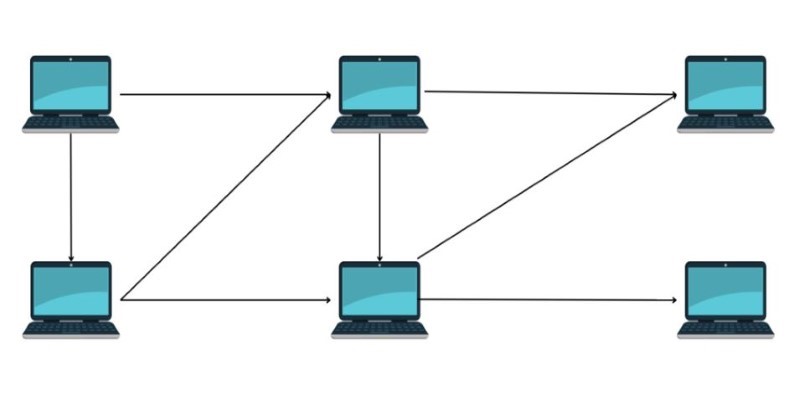Artificial Intelligence (AI) is revolutionizing how energy is managed in homes, buildings, and industries. By improving energy efficiency and reducing waste, AI-powered energy management systems are not only lowering electricity bills but also helping organizations and individuals shrink their carbon footprints. This shift is becoming essential as businesses and governments seek sustainable solutions in response to rising energy costs and climate concerns.
AI brings automation, prediction, and smart decision-making into energy systems, enabling users to track consumption in real time and optimize usage. These intelligent systems adjust power use automatically and make operations more environmentally friendly without requiring manual input.
Understanding AI in Energy Management Systems
An Energy Management System (EMS) is a computer program that helps you keep track of, manage, and lower your energy use. EMS systems that are used today collect data and give reports. But when AI is added to these systems, they become proactive. These people look at a lot of data, find trends, make good guesses, and act right away to lower energy use.
Key functions of AI-based EMS include:
- Real-time monitoring and data collection
- Energy forecasting based on historical trends
- Automated control of lighting, HVAC, and machinery
- Fault detection and system diagnostics
- Energy consumption reports and carbon emission tracking
AI in energy management does more than automate—it continuously learns and evolves to improve performance over time.
Cutting Energy Costs Using AI Technology

One of the main benefits of using AI in energy management is cost reduction. AI helps reduce electricity bills by analyzing when and how energy is used and then optimizing it for maximum savings.
How AI reduces energy costs:
- Peak Load Management: AI identifies periods of high energy usage and shifts consumption to off-peak hours.
- Smart Scheduling: It schedules machines and systems to run when energy rates are lower.
- Preventive Maintenance: AI detects equipment inefficiencies or failures before they lead to energy waste.
- Energy Waste Reduction: Lights, heating, or air conditioning can be automatically turned off in unused rooms.
With AI, companies and households no longer need to guess how to save money on electricity. The system takes care of it through automation and smart controls.
Lowering Carbon Footprints with Smart Energy Use
Beyond saving money, AI in energy management plays a major role in reducing carbon emissions. It encourages clean and responsible energy use, helping the world move toward sustainability goals.
AI contributes to carbon reduction by:
- Boosting Efficiency: Better use of energy leads to lower carbon output.
- Supporting Renewables: AI helps manage variable sources like solar and wind more effectively.
- Minimizing Waste: Reducing the overuse of electricity means fewer fossil fuels are burned.
- Tracking Emissions: AI systems can measure and report carbon emissions in real time, helping companies stay within environmental targets.
For instance, when a building utilizes artificial intelligence to minimize the amount of heating or cooling it consumes based on the occupancy of the rooms, it reduces not only the amount of energy that is used but also the amount of carbon emissions that are associated with that energy.
Real-World Examples of AI in Energy Management
Many industries are already using AI to save energy and reduce environmental harm. These systems are used in offices, factories, data centres, and even homes.
Examples include:
- Smart Buildings: AI adjusts lighting, temperature, and airflow based on occupancy and weather conditions.
- Industrial Plants: AI systems monitor machines to ensure they run only when needed, avoiding energy waste.
- Renewable Energy Farms: AI helps predict solar or wind power availability and manages storage systems for consistent supply.
- Data Centers: AI controls cooling systems to avoid overheating while using the least amount of energy.
In each case, AI is making energy use more efficient, reliable, and less harmful to the planet.
Benefits of AI in Energy Management Systems

The use of AI in energy management provides a wide range of benefits. These advantages go beyond just cost savings and help both the environment and business operations.
Major benefits include:
- Lower energy bills through real-time optimization
- Reduced carbon emissions by improving energy efficiency
- Better decision-making using accurate data and insights
- Faster detection of system problems, saving repair costs
- Improved comfort in homes and offices with automated controls
- Easier integration of renewable energy sources into the grid
With AI, energy management becomes smarter, more sustainable, and much more effective.
Challenges to AI Adoption in Energy Systems
Despite the many benefits, there are still some barriers to fully adopting AI in energy management. Organizations and homeowners may face certain issues during the initial stages of implementation.
Common challenges include:
- High upfront costs for installing AI-powered systems and sensors
- Technical complexity in setting up and using the systems
- Data privacy concerns, especially in residential settings
- Need for training to understand and maintain the systems
- Compatibility problems with older building infrastructure
However, many companies now offer cloud-based or plug-and-play solutions that reduce these challenges and make adoption much easier.
Conclusion
AI in energy management is changing how energy is used, saved, and valued. By combining smart algorithms with real-time data, AI allows buildings and businesses to lower electricity costs and reduce carbon emissions. These systems not only create financial benefits but also help in building a greener and more sustainable future. For any organization or household seeking to cut energy waste, reduce utility bills, and make a positive environmental impact, AI-powered energy management systems are proving to be a wise investment. As adoption grows and technology becomes more affordable, the path toward low-cost, low-carbon energy will become more accessible to all.



